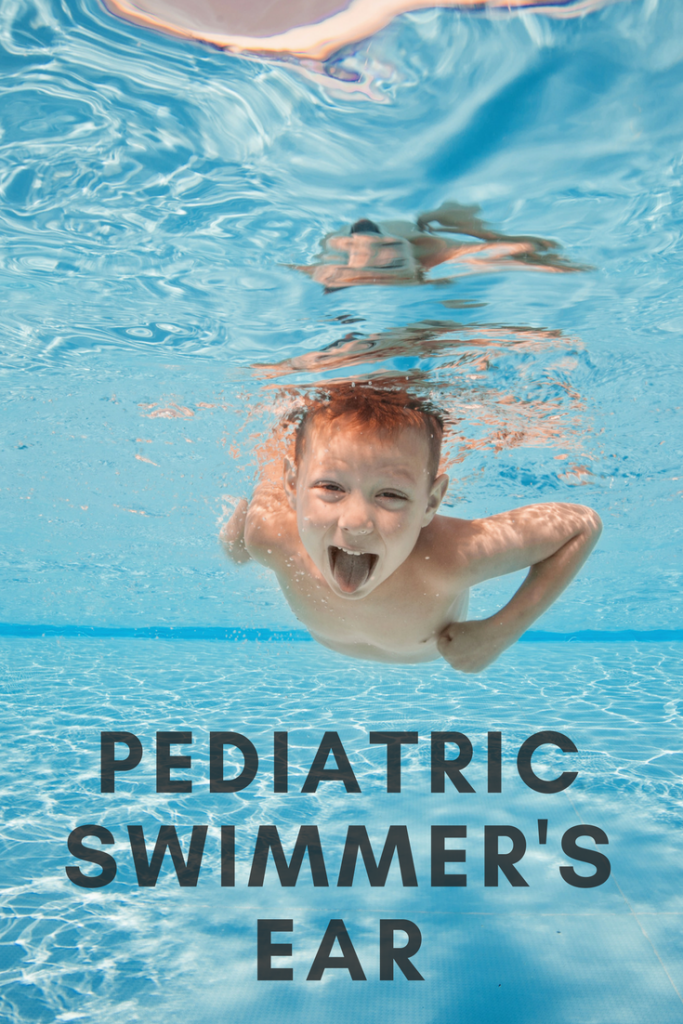Pediatric Swimmer’s Ear

What is Swimmer’s Ear?
Swimmer’s ear, or otitis externa, is an infection of the ear canal which is the passage that carries sounds from the outside of the body to the eardrum. It is just one of many types of Recreational Water Illnesses.
What Causes Swimmer’s Ear?
Swimmer’s ear is common in kids who spend a lot of time in the water. Too much moisture in the ear can irritate and ultimately break down the skin in the canal, allowing bacteria or fungi penetrate the canal. Swimmer’s ear is most common in the summertime when swimming.
What you may not know, though, is that you don’t have to swim to get swimmer’s ear! Anything that breaks the skin of the ear canal can cause an infection. That’s right—foreign objects, scratching the ear canal, dry skin or even Q-tips can all cause an infection leading to swimmer’s ear!
What are the Signs of Swimmer’s Ear?
Ear pain is the most common and first sign of swimmer’s ear. It can be very severe pain and gets worse when the outer part of the ear is pressed on or pulled. It also may increase when chewing. Sometimes, before the pain begins, the ear canal may itch.
Additional signs of swimmer’s ear include:
- A “full” or “uncomfortable” feeling in the air
- Swollen outer part of the ear
- Enlarged or tender lymph nodes around the ear
- Discharge from the year (clear or cloudy, yellowish)
- Affected hearing (when pus or swelling blocks the passage of sound)
Preventing Swimmer’s Ear
The utilization of an over-the-counter dilute acetic acid or alcohol droplets in the ears after swimming can help to prevent swimmer’s ear, especially in children who happen to get swimmer’s ear often. However, these drops should not be given to children who have ear tubes or a hole in the ear.
Treating Swimmer’s Ear
Treatment will depend on the severity of the infection and the pain level. A healthcare provider may prescribe ear drops that contain antibiotics to fight the infection, potentially alongside a steroid to reduce swelling in the ear canal. If the swelling is too much to put the drops into the ear canal, there are additional treatment options that a physician may suggest.
While over-the-counter pain relievers can often manage the ear pain, prescription pain medication may be necessary for more severe infections. Once treatment begins, your child will start to feel better within 1 – 2 days, with swimmer’s ear usually being cured within 7 – 10 days of treatment.
When Should I Call Building Blocks Pediatrics?
Ear infections should be treated by a physician as soon as possible. If an infection is not treated, the ear pain will get worse and the infection may spread to other parts of the body.
Call our board-certified pediatrician, Dr. Asif, at Building Blocks Pediatrics at (660) 262-7415 immediately if your child is experiencing any ear pain, with or without fever, decreased hearing in one or both ears or abnormal discharge.

